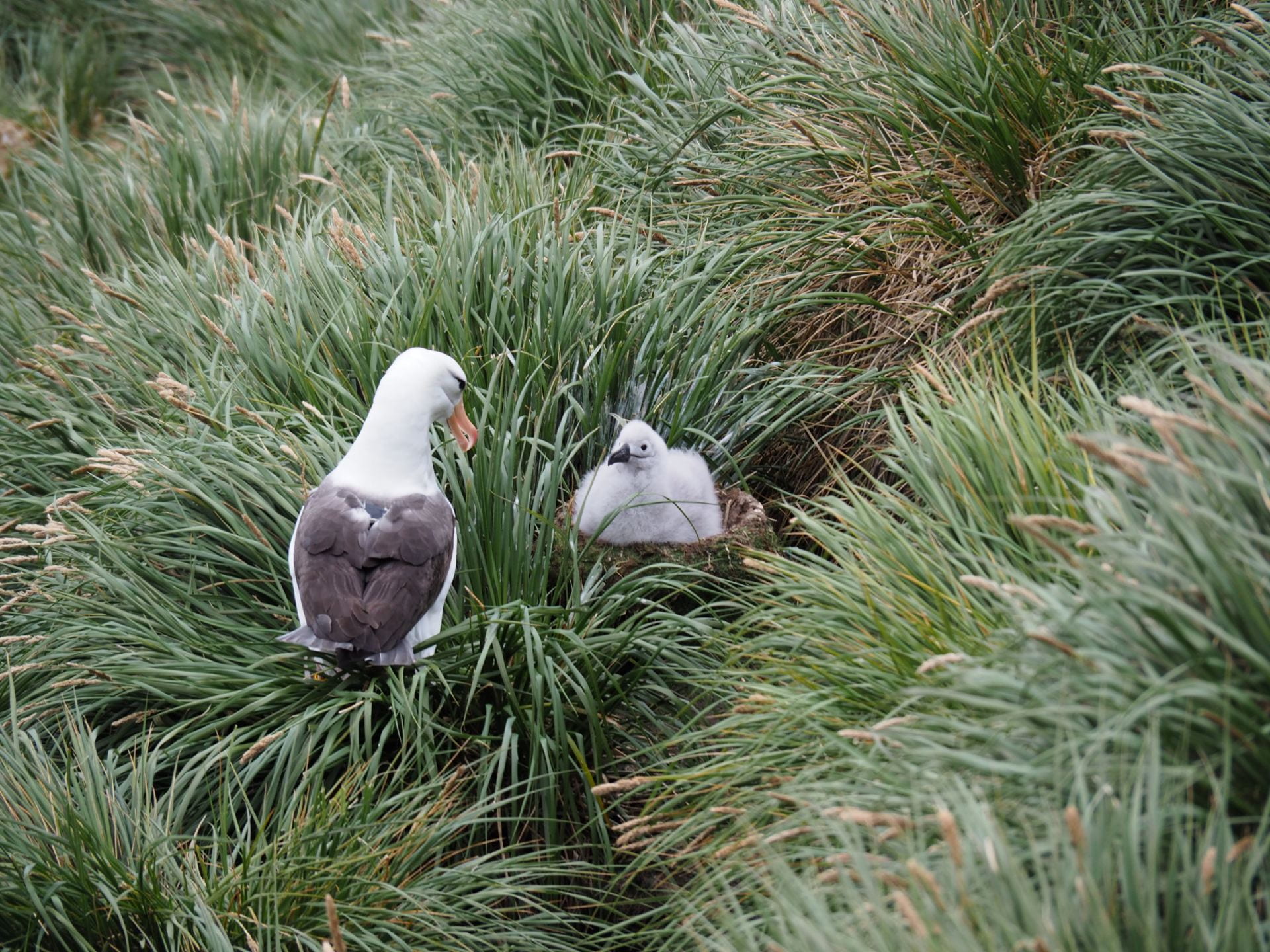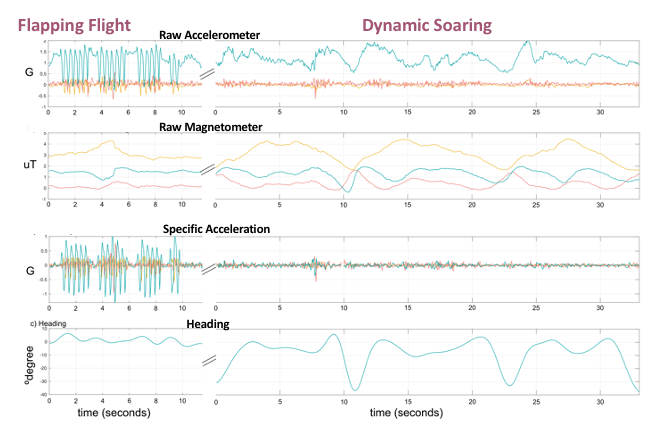We’re very excited to have completed the first season of albatross research at Bird Island, a remote seabird and seal colony in the sub-Antarctic. Research scientist and seabirder extraordinaire Dr. Rachael Orben set out in late November 2019 for the British Antarctic Survey’s Bird Island Research Station where she lived among albatross, petrels, penguins and seals for five months before returning this Spring.

The BAS research station and living quarters peek out from behind the tussock grass on the edge of a lagoon on the south central side of the island. Bird Island lies on the northwestern tip of South Georgia and is only accessible by boat. The island is cold, windy, and dominated by craggy mountains covered in thick tussock grass. A favorite breeding site for millions of seabirds and seals, it is a marine biologist’s dream.
Rachael successfully deployed a smorgasbord of biologging devices on breeding grey-headed and black-browed albatross to capture high-resolution location, movement, and physiological data on birds while they foraged throughout the blustery seas of the Southern Ocean.

Dr. Rachael Orben places a black-browed albatross (Thalassarche melanophris) chick onto its nest that has been replaced with a camouflaged scale. These nest balances are exquisitely crafted to mimic the nesting pedestals of albatross and they enable researchers to record a timeseries of weights of the birds without repeatedly handling them.

A black-browed albatross seen at its nest with a datalogger taped to its back after returning from a trip to sea. Biologging devices are safely taped to the dorsal feathers of the birds and are removed as soon as the birds return from a single trip.
Upon return from Bird Island, Rachael transferred gigabyte upon gigabyte of data to the Thorne lab’s data repository to which Dr. Melinda Conners, post-doc in the Thorne lab, began sorting, cleaning, and analyzing the data, all the while dreaming of limitless RAM upgrades. Melinda is using data from the high-resolution accelerometer and magnetometer tags to develop a behavioral classification routine using hidden Markov models in collaboration with Théo Michelot at the University of St. Andrews. The accelerometers and magnetometers deployed on seabirds are akin to sensors used in robotics and avionics, and by recording extremely high-resolution data (e.g. 75 Hz) on animal orientation and motion, they capture very fine-scale animal behavior. This makes the analysis of this data both daunting and exciting! We are grateful for the high performance computing clusters at Stony Brook university which facilitate quick processing of datasets that contain tens of millions of data points.

An example of accelerometer and magnetometer data characteristics during two different flight modes (flapping flight vs. dynamic soaring)
Last but not least, we are thrilled to announce that our miniature electro-cardiogram (ECG) dataloggers, custom designed by Dr. Alexei Vyssotski at the University of Zürich, successfully collected long records of clean, high-resolution heart-rate data from albatrosses foraging at-sea. While Melinda wraps up the behavioral classification routine in the coming weeks, she will begin to analyze the 600 Hz ECG data from foraging albatross to quantify heartrate (beats/min) along foraging trips of incubating and chick-brooding albatross. The heart-rate data along with behavioral timeseries derived from accelerometer and magnetometer data will enable the Thorne lab to begin to piece together an understanding of how wind influences flight behavior and energetics in albatross. We are very excited to have this data!

